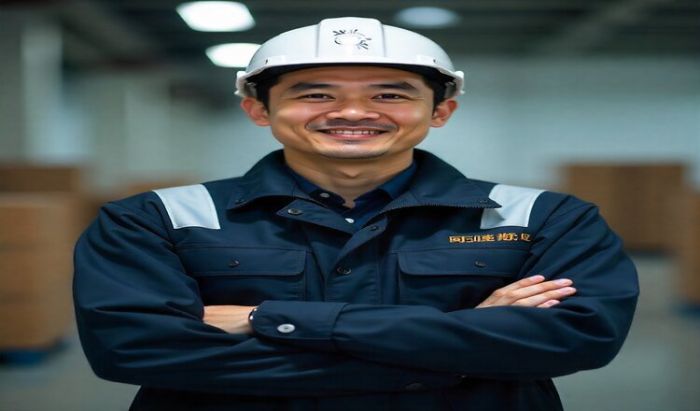
What Are Spill Kits and Why Every Workplace Needs Them

Accidents can happen in any workplace — a leaking chemical drum, an oil spill near machinery, or even a simple liquid slip hazard. In such moments, a quick and effective response can make all the difference between a small incident and a major workplace emergency. This is where spill kits come in. These simple but powerful safety tools are essential for maintaining a clean, safe, and compliant work environment.
For anySafety Officer, understanding how spill kits work — and ensuring workers know how to use them — is a key part of accident prevention and emergency preparedness. In fact, most Safety Courses in Pakistan emphasize the importance of spill control and safe handling practices as part of professional safety training.
What Is a Spill Kit?A spill kitis a pre-packaged collection of absorbent materials, protective gear, and cleanup tools designed to manage hazardous or non-hazardous spills. Think of it as a “first aid kit” for workplace spills — everything you need to contain, control, and clean up a liquid hazard quickly and safely.
Spill kits are typically categorized into three main types:
Oil Spill Kits:Used for oil-based liquids and petroleum products that don’t mix with water.
Chemical Spill Kits:Designed for hazardous chemicals, acids, or solvents.
Universal Spill Kits:Versatile kits that can handle a wide range of liquids, including water-based and non-aggressive chemicals.
Each type includes absorbent pads, socks, gloves, disposal bags, and clear instructions for safe use.
Why Spill Kits Are Essential for Workplace SafetyImagine a scenario in a manufacturing unit where a worker accidentally knocks over a drum of lubricant. Without a spill kit nearby, the liquid could spread quickly, creating a serious slip hazard and risking contamination of nearby machinery or materials.
Having a spill kit available — and employees trained to use it — ensures that small incidents are contained before they become bigger problems. Let’s explore some of the main reasons every workplace needs spill kits:
1. Protecting Employee SafetyWorkplace spills can lead to slips, chemical burns, respiratory issues, or even fires in severe cases. With the right spill kit, employees can respond immediately, using protective gloves and absorbent pads to control the hazard safely.
2. Preventing Environmental DamageSpills that reach drains, soil, or water sources can cause lasting environmental harm. A spill kit provides quick containment tools, helping businesses act responsibly and comply with environmental protection standards.
3. Maintaining Compliance with Safety RegulationsUnder global HSE and OSHA standards, workplaces are required to have proper spill response measures in place. Safety Officers must ensure that spill kits are available, accessible, and maintained as part of workplace safety compliance.
4. Reducing Downtime and CostsUncontrolled spills can halt production, damage property, or require expensive cleanup efforts. Spill kits help avoid these disruptions by allowing workers to manage the situation immediately and effectively.
5. Promoting a Safety-First CultureWorkplaces that invest in spill preparedness demonstrate a genuine commitment to employee welfare and environmental responsibility. This builds trust and accountability among workers.
Components of an Effective Spill KitNot all spill kits are the same — their contents depend on the materials and hazards present in your workplace. However, most quality kits include the following essentials:
Absorbent Pads and Socks:To contain and soak up liquids.
Disposal Bags and Ties:For safely discarding used materials.
Protective Equipment:Gloves, goggles, and coveralls for safe handling.
Instruction Sheet:Clear steps for proper spill response.
Labels or Tags:To identify the type of spill kit (oil, chemical, or universal).
A Safety Officer should routinely inspect these items and replace any used or expired components to ensure readiness at all times.
How to Use a Spill Kit: Step-by-Step GuideKnowing how to use a spill kit correctly can make all the difference during an emergency. Here’s a simple step-by-step guide that can be used as a workplace training checklist:
1. Assess the SituationDetermine the type and size of the spill. Identify any potential hazards such as fumes, fire risks, or toxic exposure.
2. Wear Personal Protective Equipment (PPE)Before approaching the spill, put on gloves, goggles, and coveralls to protect yourself.
3. Stop the SourceIf possible, stop the leak at its origin — close a valve, seal a container, or upright a fallen drum.
4. Contain the SpillUse absorbent socks or booms from the kit to encircle the spill and prevent it from spreading.
5. Absorb and Clean UpPlace absorbent pads on the spill to soak up the liquid. Dispose of used materials in designated disposal bags.
6. Decontaminate and ReportClean the area thoroughly and notify the Safety Officer or supervisor. Ensure that the incident is recorded for future safety improvements.
This simple process is often taught in Safety Courses in Pakistan to ensure that every worker, not just the Safety Officer, knows how to respond effectively in an emergency.
Common Mistakes to Avoid When Using Spill KitsEven with the best equipment, human error can compromise safety. Here are some common mistakes and how to avoid them:
Not Wearing PPE:Always wear gloves and goggles before handling spills.
Ignoring Small Spills:Even minor leaks should be contained immediately to prevent bigger problems.
Improper Disposal:Used absorbents must be treated as hazardous waste and disposed of properly.
Lack of Training:Workers should be trained regularly on spill response procedures.
Unlabeled or Inaccessible Kits:Spill kits must be clearly labeled and kept in easy-to-reach areas.
Conduct monthly spill response drills for all employees.
Assign a trained Safety Officer responsible for spill management.
Customize spill kits according to your workplace materials.
Label all storage areas and provide clear signage for spill kit locations.
Restock spill kits immediately after every use.
These practical measures not only enhance workplace safety but also demonstrate compliance with international safety standards.
The Role of Safety Officers in Spill ManagementA Safety Officer plays a crucial role in developing, implementing, and maintaining spill response plans. Their responsibilities include:
Assessing spill risks during safety audits.
Ensuring all employees are trained in spill response procedures.
Verifying that spill kits are properly maintained and located in critical areas.
Reviewing incident reports to improve preventive strategies.
Many professionals gain these skills throughSafety Courses in Pakistan, which provide hands-on training in spill control, hazard identification, and emergency response planning.
FAQs About Spill KitsWhat type of spill kit should my workplace have?Choose a spill kit based on the liquids you handle. Oil-only for hydrocarbons, chemical for acids or bases, and universal for mixed liquids.
How often should spill kits be inspected?Kits should be inspected monthly by the Safety Officer to ensure all items are intact and ready for use.
Do all employees need spill response training?Yes. Every employee should know basic spill control procedures to act quickly and safely before help arrives.
Can I make my own spill kit?While possible, pre-assembled commercial kits are recommended as they meet safety standards and are tailored for specific hazards.
ConclusionIn any workplace, being prepared is the key to preventing accidents and ensuring safety. Spill kits are more than just compliance tools — they are life-saving resources that protect employees, the environment, and business operations. A proactive Safety Officer ensures that these kits are properly placed, regularly checked, and that every worker knows how to use them.
Professionals who undergo certified Safety Courses in Pakistan learn not only the theory but also the hands-on application of spill response, making them valuable assets to any organization.

